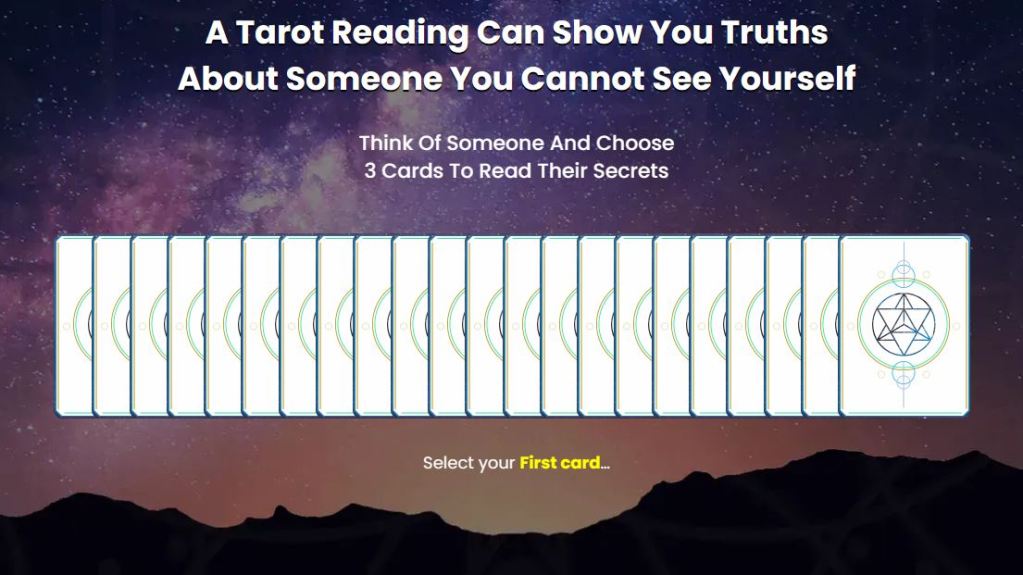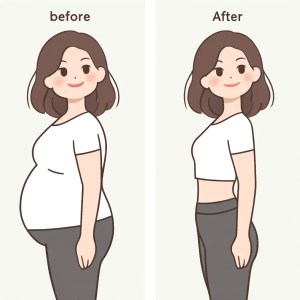- Understanding Pranayama: The Breath of Life in Yoga
- Harnessing Energy: Breath as a Reflection of Emotions
- Gateway to Meditation: From Motion to Stillness
- Detoxification: The Purifying Power of Breath
- Pranayama Techniques: A Glimpse into the Breath’s Symphony
- Delving Deeper: The Profound Layers of Pranayama Techniques
- Conclusion: The Quintessence of Pranayama in the Yogic Journey
Understanding Pranayama: The Breath of Life in Yoga
Introduction: Breath, The Vital Force
Where breath goes, mind follows.
Breath is our most primal and vital function. It’s the first act we engage in when we’re born and the last when we depart this world. Every moment in between, whether we’re awake or asleep, our breath continues its rhythmic dance — sustaining, nurturing, and nourishing us. At its most fundamental, breathing sustains our life. Yet, when harnessed with intention, it becomes a powerful tool for transformation and self-realization.
This transformative potential of breath is what the ancient yogic practice of pranayama taps into. While many in the modern world associate yoga primarily with physical postures or asanas, those immersed in its depths recognize pranayama as the very heart of the practice. Beyond the physicality of postures and beyond the intellectual realms of philosophy, pranayama stands as the bridge. It connects our tangible existence, the body and senses, with the intangible — the realm of emotions, thoughts, and consciousness.

In the vast world of yoga, pranayama is the art and science of breath control. It’s not just about inhaling and exhaling but doing so with awareness, with purpose. Through various techniques, pranayama teaches practitioners to regulate their breath, thereby influencing the flow of prana or vital energy within. This control over prana extends further, impacting the mind, emotions, and ultimately, the spirit.
In this enlightening journey, we will delve deep into the world of pranayama, uncovering its layers, techniques, and profound benefits. We’ll demystify this ancient practice and highlight its relevance and significance in today’s fast-paced world. So, take a deep breath, for you’re about to embark on a journey that promises to reshape not just your yoga practice but perhaps, your very perspective on life.
The Essence of Pranayama
“Prana” translates to vital life force, and “ayama” denotes extension or control.
“Breath is the bridge which connects life to consciousness, which unites your body to your thoughts.” – Thich Nhat Hanh
In the vast tapestry of yoga, pranayama stands as a radiant thread, weaving together the physical and metaphysical aspects of our being. At its core, pranayama isn’t just about breathing; it’s about connection — to our innermost selves, to the universal energy that courses through every atom of existence. This practice revolves around harnessing and harmonizing the vital life force that animates us.
While breathing is a natural process, pranayama is a conscious effort. It’s the art of mastering this breath, of extending and controlling the life force that breath represents. By engaging with breath in a deliberate manner, we’re not just enhancing our physical vitality but are actively stepping into the realm of the mind, emotions, and spirit.

Harnessing Energy: Breath as a Reflection of Emotions
Our breath is a profound indicator of our emotional and mental states. Take a moment to observe. When anxious or stressed, our breaths become shallow, quick, and erratic. In contrast, moments of joy or relaxation usher in deep, rhythmic, and expansive breaths. This interplay isn’t just one-sided; while our emotions influence our breath, the reverse is equally true. By controlling and modulating our breathing patterns, we can influence our emotional landscape.
Pranayama offers tools and techniques to master this interplay. With regular practice, we learn to shift our energy patterns consciously. From dispelling lethargy with invigorating breaths to soothing anxiety with calming techniques, pranayama becomes a potent ally in our quest for physical and mental well-being.
Gateway to Meditation: From Motion to Stillness
The turbulent waters of a river reflect a distorted image, but in still waters, we find clarity. Similarly, the restless mind, with its torrent of thoughts, emotions, and memories, offers little clarity. But as it stills, insights emerge.
Pranayama, with its focus on controlled, rhythmic breathing, serves as a precursor to meditation. As we deepen our breath, the fluctuations of the mind begin to settle. The consistent rhythm of inhalation and exhalation creates a meditative cadence, guiding the practitioner towards inner stillness. This stillness is not merely the absence of movement but a profound quality of being, where one is deeply rooted in the present moment. Through pranayama, we prepare the ground for this stillness, for deeper introspection and meditative absorption.

Detoxification: The Purifying Power of Breath
Every breath we take is an act of nourishment, supplying our cells with vital oxygen. But this inhalation doesn’t just provide sustenance; it also aids in expulsion. With every exhalation, we release toxins, purging our system of carbon dioxide and other waste products.
Pranayama amplifies this detoxifying process. Techniques that emphasize forceful exhalation, for instance, bolster the removal of stale air from our lungs, making space for fresh, oxygen-rich air. Other practices increase the oxygen-carrying capacity of our blood, optimizing cellular function. As we engage in these practices, we’re not just purifying our physical body but also clearing mental fog and emotional blockages. This holistic purification serves as a reset, offering clarity of body, mind, and spirit.
Pranayama Techniques: A Glimpse into the Breath’s Symphony
Pranayama is like an expansive ocean, filled with myriad techniques that cater to different needs, temperaments, and stages of one’s spiritual journey. While each method is unique, they all aim to harness the pranic energy, directing and refining it to awaken our latent potentials. Let’s delve into a few popular pranayama techniques that have enchanted practitioners for ages.
Anulom-Vilom (Alternate Nostril Breathing)
A serene dance of inhalation and exhalation through alternate nostrils, Anulom-Vilom is more than just a breathing exercise. It is a practice that integrates and harmonizes the dualities within us. By engaging both nostrils, we balance the Ida and Pingala nadis, or the lunar and solar energy channels, facilitating the awakening of the central Sushumna nadi. The result? A harmonious synchronization of the left and right hemispheres of the brain, fostering a sense of equilibrium and tranquility. Regular practice can also enhance respiratory efficiency and foster mental clarity.
Kapalbhati (Skull Shining Breath)
This dynamic technique is a symphony of forceful exhalations followed by passive inhalations. Kapalbhati, aptly named ‘Skull Shining Breath’, isn’t just about illuminating the cranium. The forceful breaths act as a bellows, stoking the digestive fire, enhancing metabolism, and purifying the blood. On a subtler level, the vigorous exhalations clear mental cobwebs, enhancing alertness and clarity of thought. While it rejuvenates, it’s essential to practice with caution and avoid it in cases of certain health conditions like hypertension or heart ailments.
Ujjayi (Ocean Breath)
Imagine the rhythmic sound of ocean waves crashing onto the shore, each ebb and flow bringing a sense of calm. Ujjayi, often termed the ‘Ocean Breath’, mimics this soothing sound. Achieved by constricting the back of the throat during inhalation and exhalation, this pranayama technique induces a meditative quality to the breath. The resonance produced not only calms the mind and soothes the nervous system but also amplifies the awareness of the breath’s movement, aiding concentration and introspection.
Embarking on the pranayama journey is akin to diving into an ocean of possibilities. Yet, like any profound practice, it demands respect. While the benefits are manifold, incorrect technique can lead to complications. Thus, it’s imperative to learn and refine these practices under the watchful eye of an experienced teacher, ensuring that you harness their benefits safely and effectively.

Delving Deeper: The Profound Layers of Pranayama Techniques
Pranayama, an ancient yogic practice, unfolds as an intricate tapestry of techniques, each thread weaving a unique pattern in our energetic blueprint. From calming the restless mind to invigorating every cell, pranayama holds the key to unlocking myriad dimensions of our being. This section illuminates some of these time-honored techniques, shedding light on their significance and method.
Bhastrika (Bellows Breath)
Resembling the fanning action of blacksmith bellows, Bhastrika is a series of rapid, forceful inhalations and exhalations. This fiery technique is known to kindle the body’s internal fire, boosting metabolism and enhancing oxygen supply to the cells. On a subtler note, it aids in dispelling stagnation in the pranic channels, creating a surge of energy. However, like the fierce flames it emulates, this practice should be approached with caution, ensuring it aligns with one’s physical and energetic constitution.
Sheetali (Cooling Breath)
In stark contrast to the fiery Bhastrika, Sheetali introduces a refreshing coolness. This pranayama, characterized by inhaling through a curled tongue and exhaling through the nose, offers a cooling effect on the body and mind. Ideal for hot climates or heated emotions, Sheetali calms the nervous system, reduces blood pressure, and soothes any inflammatory conditions. Spiritually, it helps balance the fiery aspects of our temperament, infusing a sense of peace and tranquility.
Bhramari (Humming Bee Breath)
Bhramari, named after the humming sound of bees, involves exhaling with a deep, melodious hum. This resonating sound creates vibrations that massage the brain, pineal, and pituitary glands. The resultant effect is profoundly soothing, reducing mental chatter and anxiety. Regular practice can enhance concentration, improve sleep, and even promote creativity as the right hemisphere of the brain is stimulated.
Each pranayama technique, like a unique musical note, adds its essence to the symphony of our holistic well-being. However, it’s crucial to approach these practices with sensitivity and respect. Some techniques may resonate deeply, while others might need adaptation or avoidance. An experienced yoga teacher, adept in the nuances of pranayama, can guide practitioners on this journey, ensuring safe, effective, and transformative practices.

Conclusion: The Quintessence of Pranayama in the Yogic Journey
Yoga, in its essence, is not merely a series of postures or meditative states but a holistic experience that intertwines the body, mind, and spirit. While asanas sculpt and prepare the physical vessel, pranayama breathes life into this form, animating it with the vital force of prana. This dance of breath and body, of energy and matter, is the heart of the yogic tradition.
Pranayama offers us a profound tool to navigate the ebbs and flows of our existence. With every conscious inhalation, we draw in life’s experiences, joys, and challenges; with each exhale, we release, let go, and find space for the new. It serves as a mirror, reflecting our inner state, our emotions, and our inherent vitality.
As we delve deeper into the realms of yoga, let’s not forget the invaluable treasure of pranayama. Its techniques, ancient yet timeless, invite us to explore the infinite landscapes within. Through the simple act of breathing, we are reminded of our connection to the universe, our oneness with all of existence.
So, whether you’re a seasoned yogi or just beginning your journey, embrace pranayama as a lifelong companion. Allow it to guide you, nourish you, and elevate you. For within the rhythmic dance of breath lies the symphony of life itself, reminding us that every inhale is a new beginning and every exhale a gentle letting go. Dive deep, savor the richness of each breath, and uncover the universe that resonates within.
Do not forget to check out all of our exciting free tools! Calculators, quizzes and downloadable checklists all for free.
















